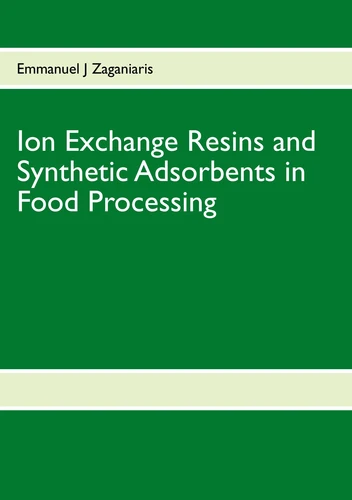Ion Exchange Resins and Synthetic Adsorbents in Food Processing
2nd edition
Par : Formats :
Disponible dans votre compte client Decitre ou Furet du Nord dès validation de votre commande. Le format PDF est :
- Compatible avec une lecture sur My Vivlio (smartphone, tablette, ordinateur)
- Compatible avec une lecture sur liseuses Vivlio
- Pour les liseuses autres que Vivlio, vous devez utiliser le logiciel Adobe Digital Edition. Non compatible avec la lecture sur les liseuses Kindle, Remarkable et Sony
 , qui est-ce ?
, qui est-ce ?Notre partenaire de plateforme de lecture numérique où vous retrouverez l'ensemble de vos ebooks gratuitement
Pour en savoir plus sur nos ebooks, consultez notre aide en ligne ici
- Nombre de pages304
- FormatPDF
- ISBN978-2-322-26189-5
- EAN9782322261895
- Date de parution13/08/2019
- Protection num.Digital Watermarking
- Taille3 Mo
- Infos supplémentairespdf
- ÉditeurBooks on Demand
Résumé
The book reviews the use of ion exchange resins and synthetic adsorbents in food industries such as sugar (sucrose), monosaccharides (glucose, fructose, tagatose), polyols, oligosaccharides such as inulin, synthetic sweeteners such as sucralose, fruit juices (orange juice, apple juice, other fruit juices), milk whey, amino acids, organic acids (citric, lactic, malic acid), gelatin, glycerin, nutraceuticals (vitamins, polyphenols) and various other applications such as pectins and wine stabilization.
The focus is on ion exchange rather than on food processing, it is therefore addressed to all those working in food processing industries or in parallel industries for whom ion exchange is not their primary field of experience.
The focus is on ion exchange rather than on food processing, it is therefore addressed to all those working in food processing industries or in parallel industries for whom ion exchange is not their primary field of experience.
The book reviews the use of ion exchange resins and synthetic adsorbents in food industries such as sugar (sucrose), monosaccharides (glucose, fructose, tagatose), polyols, oligosaccharides such as inulin, synthetic sweeteners such as sucralose, fruit juices (orange juice, apple juice, other fruit juices), milk whey, amino acids, organic acids (citric, lactic, malic acid), gelatin, glycerin, nutraceuticals (vitamins, polyphenols) and various other applications such as pectins and wine stabilization.
The focus is on ion exchange rather than on food processing, it is therefore addressed to all those working in food processing industries or in parallel industries for whom ion exchange is not their primary field of experience.
The focus is on ion exchange rather than on food processing, it is therefore addressed to all those working in food processing industries or in parallel industries for whom ion exchange is not their primary field of experience.








